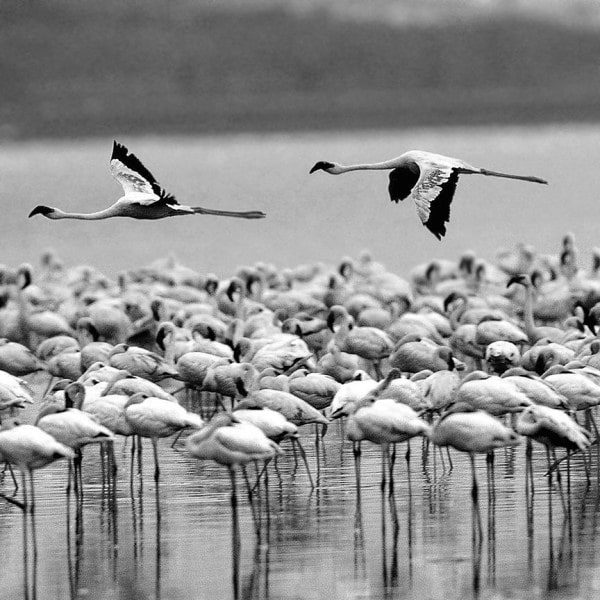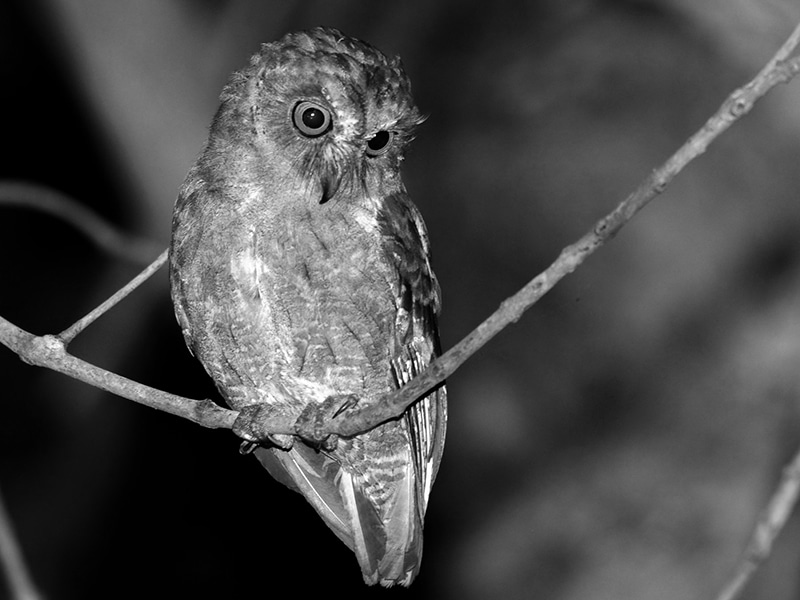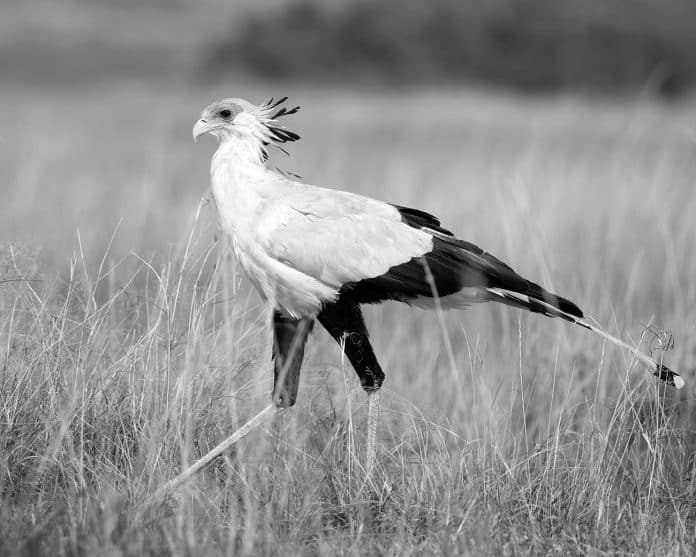Discover the Breathtaking Diversity: A Must-See List of Birds of Tanzania
Tanzania, a country in East Africa known for its stunning landscapes and diverse wildlife, is also a paradise for birdwatching enthusiasts. With its varied habitats ranging from savannahs to rainforests, Tanzania is home to an incredible array of bird species. From vibrant colored birds to majestic raptors, Tanzania offers a unique opportunity to witness the beauty and diversity of avian life. In this article, we will explore the must-see list of birds of Tanzania, highlighting its endemic and rare species, birding hotspots, and conservation efforts.
Importance of Tanzania for birdwatching enthusiasts
Tanzania holds great importance for avid birdwatchers around the world. The country boasts a bird checklist of over 1,100 species, making it one of the top birding destinations in Africa. The diverse range of habitats, including national parks, game reserves, and wetlands, provides a haven for both resident and migratory birds. Furthermore, Tanzania is home to several endemic species, making it a must-visit destination for bird enthusiasts looking to add unique and rare species to their life lists.
Birding hotspots in Tanzania
When it comes to birding hotspots, Tanzania has no shortage of incredible locations. One of the most famous is the Serengeti National Park, known for its abundant wildlife, including over 500 bird species. The park offers a chance to spot iconic birds such as the Secretarybird, Kori Bustard, and Lilac-breasted Roller.
Another hotspot is the Ngorongoro Conservation Area, a UNESCO World Heritage Site. This area is teeming with both resident and migratory birds, with species like the Greater Flamingo, Grey Crowned Crane, and Verreaux’s Eagle-Owl making appearances.
For those interested in wetland birding, the Lake Manyara National Park is a must-visit. The park is home to a wide variety of waterbirds, including the Pink-backed Pelican, African Fish Eagle, and Goliath Heron. The diverse ecosystem of Lake Manyara makes it a prime location for birdwatching.

Endemic and rare bird species found in Tanzania
Tanzania is a treasure trove of endemic and rare bird species. One such species is the Tanzanian Red-billed Hornbill, found only in Tanzania and parts of Kenya. This striking bird with its bright red beak can be spotted in the woodlands and savannahs of Tanzania. Another rare species is the Udzungwa Forest Partridge, which is endemic to the Udzungwa Mountains. Its distinct call and elusive nature make it a prized sighting for birdwatchers.
The Pemba Scops Owl is another rare gem found in Tanzania. This small owl, with its distinctive orange eyes, is endemic to the island of Pemba and can be seen in the dense forests. These are just a few examples of the many endemic and rare bird species that make Tanzania a truly special destination for birdwatching.
A comprehensive list of birds of Tanzania
Here is a comprehensive list of some of the remarkable bird species you can encounter in Tanzania:
- African Fish Eagle
- Grey-headed Kingfisher
- Marabou Stork
- Yellow-billed Stork
- African Spoonbill
- Black-headed Heron
- Lilac-breasted Roller
- Grey Crowned Crane
- Secretarybird
- Kori Bustard
- Verreaux’s Eagle-Owl
- Greater Flamingo
- Pink-backed Pelican
- Goliath Heron
- Tanzanian Red-billed Hornbill
- Udzungwa Forest Partridge
- Pemba Scops Owl

This list only scratches the surface of the incredible birdlife found in Tanzania. The country’s diverse habitats are home to many more species waiting to be discovered.
Birdwatching tips and techniques in Tanzania
To fully enjoy the birding experience in Tanzania, it’s essential to be prepared and knowledgeable. Here are some tips and techniques to enhance your birdwatching adventure:
- Bring a good pair of binoculars: Investing in a quality pair of binoculars will greatly enhance your ability to spot and observe birds in their natural habitat.
- Learn bird calls and songs: Familiarize yourself with the unique calls and songs of the bird species you hope to encounter. This will help you identify birds even when they are hidden from view.
- Hire a local bird guide: Engaging the services of a knowledgeable local bird guide will greatly enhance your birding experience. They can help you locate specific species and provide valuable insights into the behavior and ecology of the birds.
- Be patient and observant: Birdwatching requires patience and keen observation skills. Take your time to scan the area, listen for calls, and watch for movement in the vegetation. Birds can often be easily missed if you rush or are not attentive.
- Respect the environment: When birdwatching, it is crucial to respect the natural environment and avoid disturbing the birds or their habitats. Keep a safe distance, avoid loud noises, and follow any guidelines or regulations set by the park authorities.
By following these tips and techniques, you can make the most of your birdwatching adventure in Tanzania.
Conservation efforts for bird species in Tanzania
Tanzania is committed to the conservation of its rich birdlife. The government, in collaboration with various organizations, has implemented several initiatives to protect and preserve bird species and their habitats. National parks and reserves have been established to safeguard important bird habitats, and strict regulations are in place to prevent illegal activities such as poaching and habitat destruction. Additionally, community-based conservation projects have been initiated to involve local communities in bird conservation efforts.
These conservation efforts are crucial for the long-term survival of Tanzania’s bird species and ensure that future generations can continue to witness the avian wonders of the country.
Best time to visit Tanzania for birdwatching
The best time to visit Tanzania for birdwatching largely depends on the specific species you wish to see. However, a general rule of thumb is to plan your visit during the dry season, which typically runs from June to October. During this time, the vegetation is less dense, making it easier to spot birds. Migratory species also arrive during this period, adding to the diversity of birdlife.
That being said, Tanzania is a year-round birding destination, and each season offers unique opportunities. The wet season, from November to May, brings lush vegetation and breeding activity, making it an excellent time for bird photography and witnessing courtship displays.
Popular birding tours and guides in Tanzania
For those looking for a guided birding experience, there are several reputable tour operators and bird guides in Tanzania. These experts have extensive knowledge of the local birdlife and can tailor tours to meet specific interests and preferences. Some popular birding tours include visits to the Serengeti, Ngorongoro Crater, and the Usambara Mountains.
It is advisable to book birding tours in advance to secure the services of experienced guides and ensure a seamless and fulfilling birdwatching experience.
Conclusion: Exploring the avian wonders of Tanzania
Tanzania truly is a birdwatcher’s paradise, offering a mesmerizing array of bird species in breathtaking natural settings. From endemic species to rare gems, the avian diversity of Tanzania is unparalleled. By visiting the birding hotspots, learning bird calls, and respecting the environment, birdwatching enthusiasts can have a memorable and rewarding experience in this East African gem.
So, pack your binoculars, grab a field guide, and get ready to discover the avian wonders of Tanzania. Whether you are an experienced birder or a novice, this country will leave you in awe of its stunning birdlife. Don’t miss the opportunity to add Tanzania to your list of must-visit birding destinations.
For more articles related to Wildlife in Tanzania (Animals), click here!


































